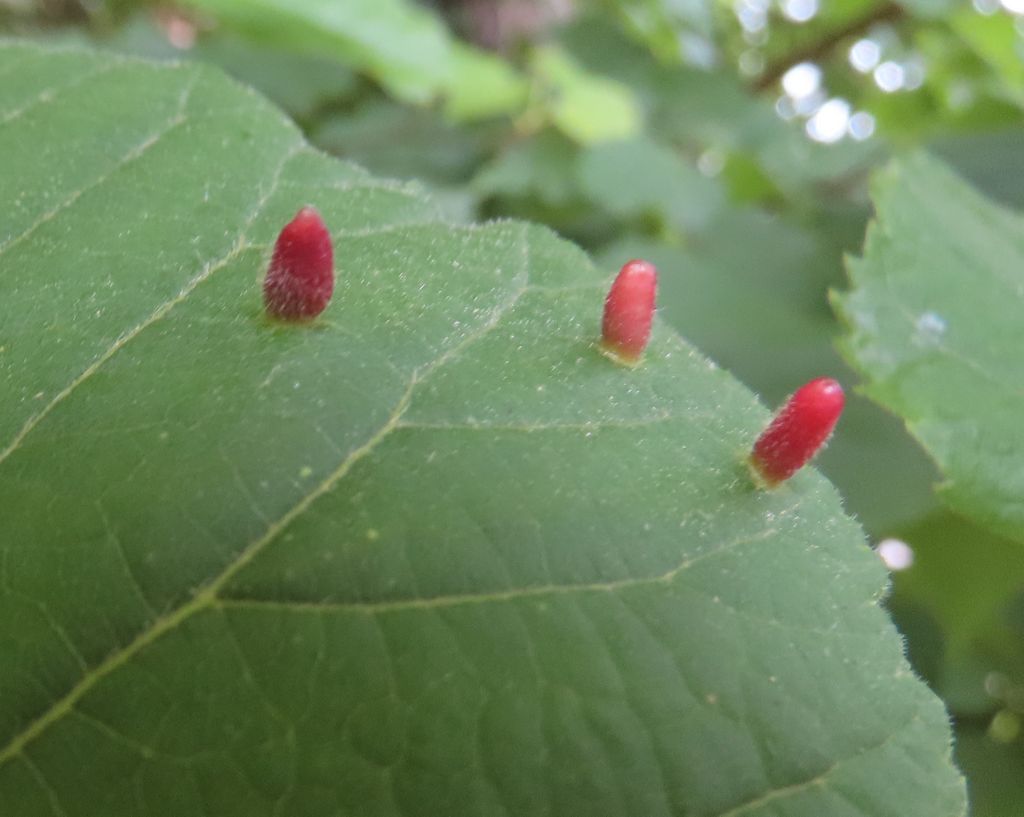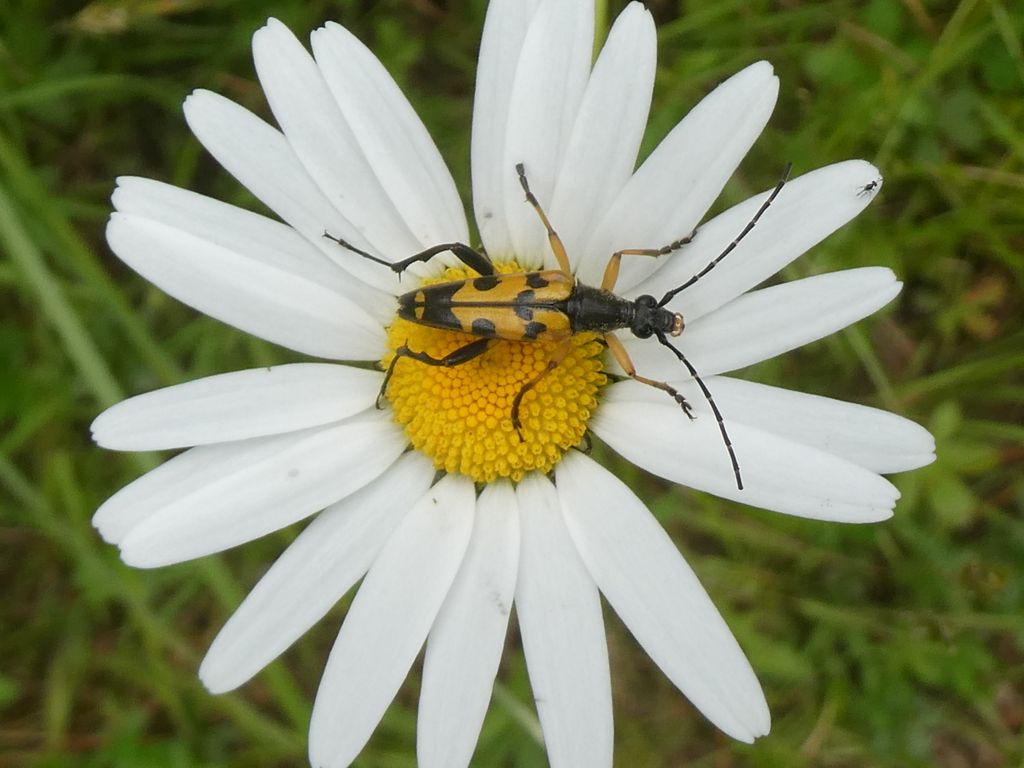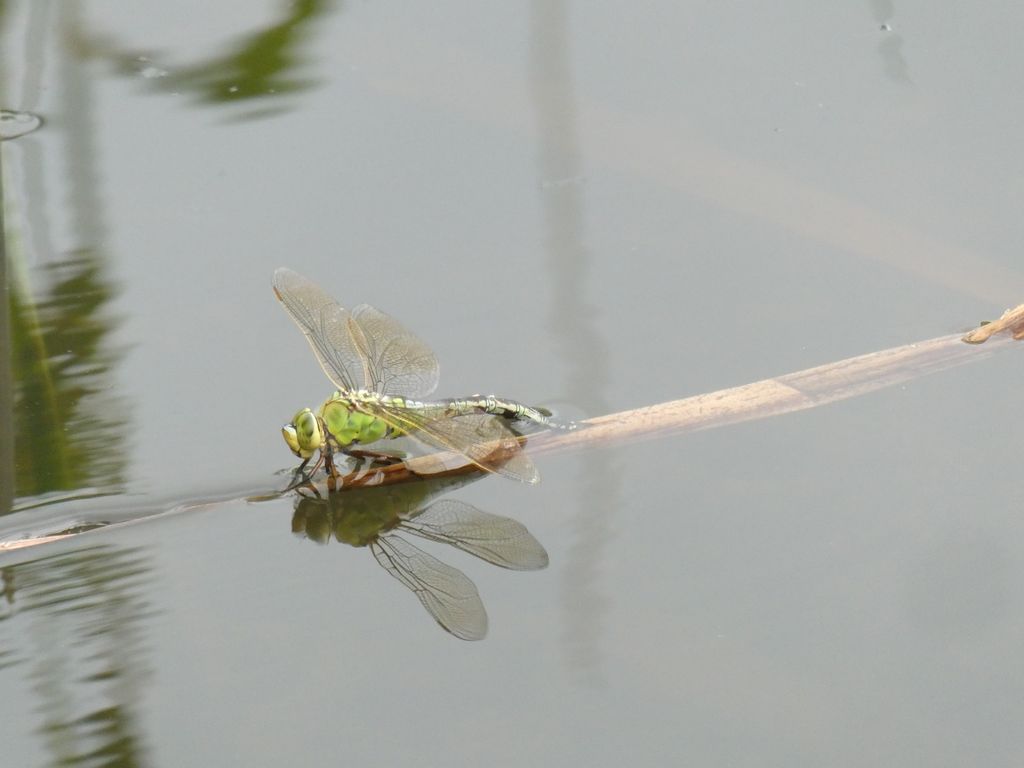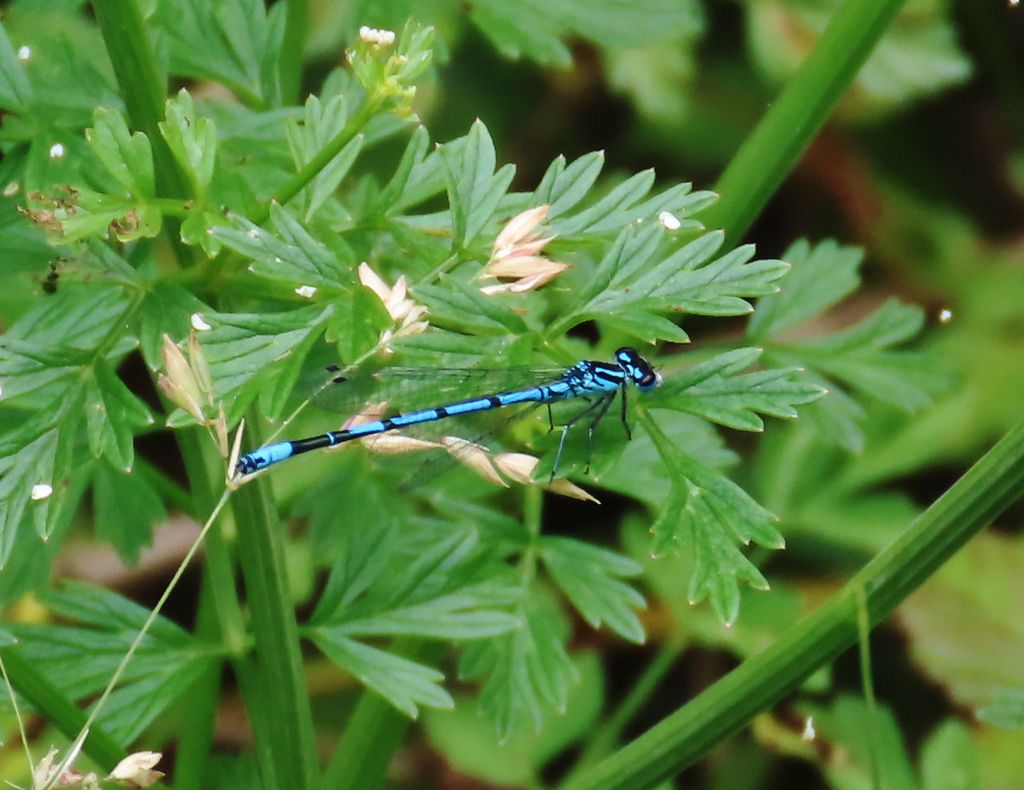Rob Stallard led a walk round Bramshill Plantation on the morning of Saturday 22 June. It is an extensive area of conifer plantations on a former heathland common, later used for some sand and gravel extraction and is crossed by a network of tracks and paths. It was classified as an SSSI in 1988 and covers 672 hectares. The walk began overcast and rather cool at the small car park at the south-east corner of the site. The route led briefly northwards before turning to the left through a short stretch of conifer woodland. Amongst the trees on the right hand side of the track was a large anthill (around 1.2m high) with an attendant army of Wood Ants Formica rufa. The whole nest may have as many as 250,000 individuals with one queen or maybe several related queens. An extensive open area then opened up on the right of the track which had been recently replanted following clear-felling. Flowers seen here included Foxgloves, Common Vetch, Common and Greater Bird’s-foot-trefoil, Perforate St John’s-wort, Common Agrimony and Lesser Stitchwort. The presence of Wood Sage indicated the acid pH of the southern part of the reserve. The track led to a metalled road, one of the principle arteries across the site. Nail Galls made by the larva of a mite Eriophyes tiliae were found in profusion on the leaves of a lime tree. The walk continued westwards until it reached a ride where Goat’s-rue was just coming into bloom. Hedge Woundwort and Common Fleabane were also spotted and in the shade Wood Dock. By the side of a track leading north, a bare patch of ground where sand and gravel had been stored had an interesting assemblage of flowers, including yellow Biting Stonecrop, Dove’s-foot Crane’s-bill, Common Centaury, Cut-leaved Crane’s-bill and one Bee Orchid. A Marbled White butterfly and a Ringlet butterfly were seen here.
The group turned back to continue westwards where there was a double form of Creeping Cinquefoil, together with Smooth Tare, Lesser Hawkbit and Wild Teasel. At the junction with a north running path Rob gave a brief talk about orchids and how Common Spotted-orchid and Southern Marsh-orchid hybridise on this site. A spectrum of morphological features intermediate between the two parent species was found at several places during the remainder of the walk. The path had a ditch on the right-hand side that had many moisture loving plants including Gypsywort, Hemlock Water-dropwort, Marsh Bedstraw, Hemp Agrimony and Water Figwort. The rarer Fragrant Agrimony was seen and a Hypericum, possibly a scarce species or a hybrid, was examined. A Black and Yellow Spotted longhorn beetle was seen. On the drier side of the path were Heath Speedwell and Red Bartsia. Here and in a number of places the delicate Grass Vetchling plant was discovered by seeing the bright purple single flowers as the leaves look so much like grass. A number of Meadow Brown butterflies were seen, but the highlights were three Emperor Dragonflies patrolling their territory near a ditch.
The path then curved around to the south of a large pool. Here an Emperor dragonfly was seen laying her eggs on vegetation at the water surface. A Reed Warbler was heard and two more Bee Orchids were seen. The route turned east along a wide path. Here Slender St John’s-wort was in bud as well as Dewberry and Brooklime. Following a narrow path south the route approached another pond. A continuous chorus of whirring and grating sounds which gradually increased in volume turned out to be coming from the population of Marsh Frogs Pelophylax ridibundus which live in a medium-sized pond on the left of the track. They were hidden amongst the vegetation and were hard to spot – there was just the plopping sound as they dived down into the water if anyone approached too closely. They are Europe’s largest frog, released in Kent 1930s and spread from there with some intentional dumping of unwanted pets. The pool had a large area covered with Water Purslane.
The next section of the route followed a narrow twisting path through a conifer plantation. Lesser Spearwort and Gypsywort were found at a damp section of the path. Among the gorse bushes was a Straw Dot moth. As the narrow path reached another pond there was a row of crab apple trees weighed down by fruit. The path then joined one of the main paths running roughly north-south. In the ditch between two parallel paths Hemp Agrimony and Dotted Loosestrife were spotted.
On the eastern ditch of the track more hybrids of Common Spotted-orchid and Southern Marsh-orchid were seen. A path eastward was taken where there were more hybrid orchids and also a dozen Pyramidal Orchids. The slightly higher ground had a number of Meadow Brown butterflies as well as a Common Blue butterfly nectaring on Common Bird’s-foot-trefoil. The yellow flowers of Meadow Vetchling were also seen here. The path narrowed and entered the conifer plantation before reaching another major track running south-west under pylons back to the car park. In the slightly damp conditions here a Common Frog was seen as well as areas covered with Heath Bedstraw.
It was hoped that the rare semi-parasitic plant Yellow Bartsia would have been found. It has been previously seen at various places along the chosen route but it was not found on the day. As it is an annual plant it will hopefully crop up again, especially on disturbed ground.






Pictures by Fiona Brown, Tom Walker and Rob Stallard
